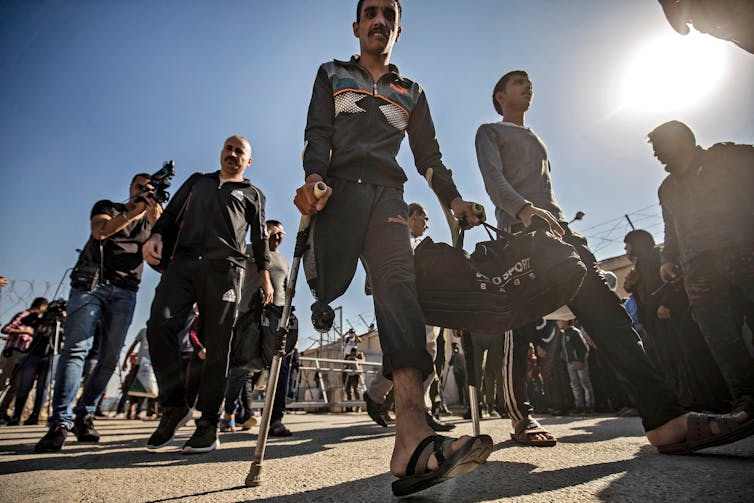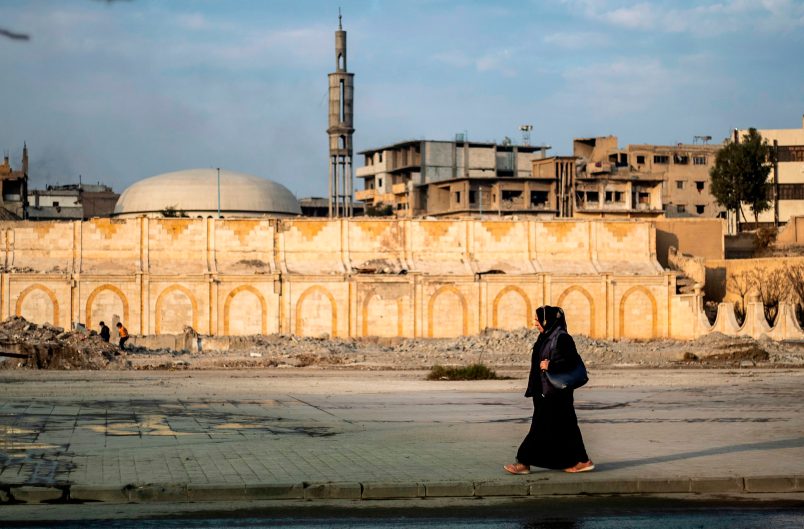This article is part of TPM Cafe, TPM’s home for opinion and news analysis. It was first published at The Conversation.
World leaders and policy experts at the outset of the COVID-19 pandemic feared that the health crisis might make the world more dangerous. They worried specifically that terrorist organizations like the Islamic State group would capitalize on the pandemic to increase attacks on civilians and recruit new sympathizers.
In some ways, the pandemic presented an opportunity to groups like the Islamic State group, known by the initials IS, because the sudden increase in health spending strained many countries’ budgets and diverted attention away from extremism. Governments’ COVID-19 responses also called on police and armies to deliver health care services in some cases.
But the feared increase in IS violence largely did not materialize.
We are scholars who study the causes of violence within countries, often between armed groups and governments, and what works to prevent it. Along with our colleague Qutaiba Idlbi, a senior fellow at the Atlantic Council think tank, we wanted to understand how COVID-19 lockdowns affected the ability of groups like IS to operate.
As our new research shows, 2020 COVID-19 lockdown measures such as curfews and travel bans — which governments have mostly since lifted — made it difficult for IS to operate and, as an indirect result, helped reduce violence in Egypt, Iraq and Syria.

Understanding the Islamic State group
Islamic State group — also known as IS, ISIS and ISIL — emerged as an offshoot of the Islamic militant terrorist group al-Qaida in Iraq around 2004.
In its rise, Islamic State group used unusually brutal and sadistic tactics against government officials, as well as civilians, including intense torture and beheadings.
But IS still cultivated genuine support from some locals in Iraq and Syria by exploiting their grievances over weak, corrupt governance — while sometimes providing better public services, like routine street cleanings and power line repairs, than the government did in the areas it controlled.
Omar, a local journalist and civil society activist from Deir Ezzor, Syria, recalled in 2022 to our co-author Qutaiba how for many in his province, “When ISIS took over Deir Ezzor province, the poor and those unable to flee were glad that the province did not fall back to the Assad regime. For them, ISIS was the better devil.”
Throughout 2013 and 2014, the Islamic State group began to take over territory in Syria and Iraq. At the time, Syrian President Bashar al-Assad was engaged in a civil war, which began in 2011 when Assad attempted to quash a popular uprising against his family’s 40-year-long rule.
The Assad regime shot at peaceful demonstrators, detained and tortured activists, and retaliated against communities that challenged his authority. In 2013, the Assad regime attacked its own people with sarin gas, killing more than 1,400 people — many of them children — in Eastern Ghouta.
Political instability was not limited to Syria at the time.
In Iraq, for example, then-Prime Minister Nouri al-Maliki responded to 2011 protests against corruption with violence, kidnapping, torture and assassinations of activists and protesters.
The Islamic State group grew during the civil conflicts and public uprisings, and tried to establish control over territory in parts of Iraq and Syria.
At its height in 2014, IS controlled 34,000 square miles — or 88,000 square kilometers — across Syria and Iraq, home to about 10 million people. The group also changed its name from the Islamic State of Iraq and al-Sham to the Islamic State, reflecting its plans to expand control over more territory.
The U.S. launched an international military intervention to defeat the Islamic State group in 2014.
This military coalition brought IS to its knees by the beginning of 2018 and ended its control over the large territory it once controlled in Syria and Iraq.
The U.S. announced it would pull out its troops from Syria in 2018 and declared victory over IS. The Islamic State group lost control over its last bit of territory in Syria in 2019.

Islamic State group under lockdown
But despite the group’s setbacks — including tens of thousands of fighters killed since its rise — IS remained active in early 2020.
In March 2020, the Syrian government enforced a two-month lockdown that closed most businesses and imposed a partial curfew. Iraq and Egypt also implemented widespread closures and curfews to prevent COVID-19 from spreading.
We analyzed data on more than 1,500 attacks initiated by IS over an 18-month period in these places during 2019 and 2020. Our research, published in January 2023, shows that travel bans and curfews helped reduce IS attacks substantially.
These findings highlight that COVID-19 lockdown measures affected the Islamic State’s ability to operate. The curfews made it difficult for IS to generate revenue and hide its movements by closing public and private institutions and restricting travel between provinces.
Our analysis showed that while in effect, curfews and travel bans helped to significantly reduce IS violence, especially in highly populated areas.
In Iraq, violence declined around 30% because of lockdowns. In Syria, there was an approximate 15% overall reduction in violence during this period.
But in Egypt, the government had already instituted curfews in some areas because of the Islamic State group’s presence and violence there. This made it difficult to analyze COVID-specific lockdowns.
Unlike many other militant groups, IS had large financial reserves to sustain itself during the lockdown. It also operates in largely rural areas and, therefore, was not especially vulnerable to the effects of lockdown measures in urban areas.
Broader implications
Our research comes at a critical time as policymakers and counterterrorism experts debate a long-term strategy to eliminate the Islamic State group.
In 2022, the U.S. and local military forces in Syria and Iraq conducted 313 operations in Iraq and Syria, killing 700 IS fighters.
The U.S. and its partners in the region have also killed several prominent IS leaders over the past few years, including Abu Ibrahim al-Hashimi al-Qurayshi, who died in February 2022.
But we think the United States’ current strategy, which focuses heavily on military alliances with local partners, is not sustainable — in part because it does not pay heed to the reasons some people in Syria and Iraq still support IS.
This article is republished from The Conversation under a Creative Commons license. Read the original article.







Thanks for reporting on this issue. One might think then that the way to prevent the spread of IS is to limit travel…but hopefully there’s something more nuanced to be drawn from the information and research.
In contrast, the 1918-1920 Influenza Pandemic saw a drastic rise in political violence, at least in Germany, with the rightwing Feme Murders.
More recently, a report commissioned by the Federal Reserve Bank of New York concluded that the 1918 influenza pandemic “profoundly shaped German society” over the next decade, ultimately strengthening of the Nazi Party.
https://www.politico.com/news/2020/05/05/fed-study-1918-pandemic-nazi-party-gains-236530
I wonder what fraction of the reduction in Islamic state-inspired violence was due to mortality (and morbidity), which also limits movement a great deal more than curfews and quarantines. I think violence will be back because these terrorists are motivated by the heavenly rewards that await them.